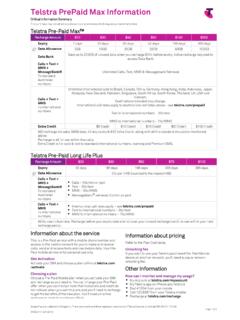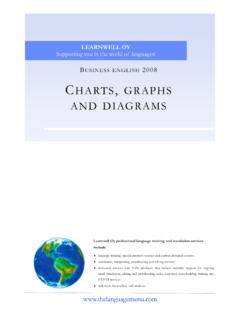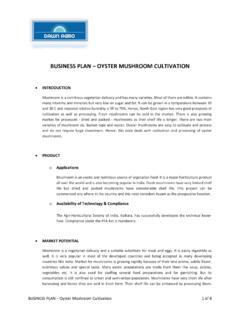Transcription of MEMORY - American Psychological Association
1 BACK TO CONTENTSC ynthia P. May, PhD College of Charleston and Gilles O. Einstein, PhD Furman University Reviewed by Nancy Diehl, PhD hong kong international School Tai Tam, hong kong and Sheryl Freedman, MA walt whitman High School bethesda, Mddeveloped and Produced by the Teachers of Psychology in Secondary Schools (TOPSS) of the American Psychological Association , November Five-Day Unit Lesson plan for High School Psychology TeachersiiMEMORYMEMORY A Five-Unit Lesson plan for High School Psychology TeachersThis unit is aligned to the following content and performance standards of the National Standards for High School Psychology Curricula (APA, 2011):COGNiTiON DOMAiN STANDARD AREA: MEMORYCONTENT STANDARDSA fter concluding this unit, students understand:1. Encoding of MEMORY 2.
2 Storage of MEMORY 3. Retrieval of memoryCONTENT STANDARDS WiTH PERFORMANCE STANDARDSCONTENT STANDARD 1: Encoding of MEMORY Students are able to (performance standards): Identify factors that influence encoding Characterize the difference between shallow (surface) and deep (elaborate) processing discuss strategies for improving the encoding of memoryCONTENT STANDARD 2: Storage of MEMORY Students are able to (performance standards): describe the differences between working MEMORY and long-term MEMORY identify and explain biological processes related to how MEMORY is stored discuss types of MEMORY and MEMORY disorders ( , amnesias, dementias) discuss strategies for improving the storage of memoriesCONTENT STANDARD 3: Retrieval of MEMORY Students are able to (performance standards).
3 Analyze the importance of retrieval cues in MEMORY explain the role that interference plays in retrieval Discuss the factors influencing how memories are retrieved explain how memories can be malleable discuss strategies for improving the retrieval of memoriesTOPSS thanks Julie A. Penley, Phd, of el Paso Community College, and Kristin A. Ritchey, Phd, of ball State University for their reviews of this lesson FivE-DAY UNiT LESSON plan FOR HiGH SCHOOL PSYCHOLOGY TEACHERS PROCEDURAL TiMELiNE 1 iNTRODUCTiON 3 CONTENT OUTLiNE 5 ACTiviTiES 31 CRiTiCAL THiNkiNG AND DiSCUSSiON QUESTiONS 53 RESOURCES, REFERENCES, AND 55 RECOMMENDED READiNG This project was supported by a grant from the American Psychological 2013 American Psychological FivE-DAY UNiT LESSON plan FOR HiGH SCHOOL PSYCHOLOGY TEACHERSBACK TO CONTENTSLEssOn 1.
4 OVERVIEW OF MULtIsYstEM MODEL OF MEMORYA ctivity : The Pervasive Role of MEMORY in Everyday LifeActivity : Categorizing Different Types of MemoryLEssOn 2: sEnsORY MEMORY AnD WORKInG MEMORYA ctivity 2: Operation Span TaskLEssOn 3: LOnG-tERM MEMORY : EnCODInGActivity : Repeated Exposure versus Deep ProcessingActivity : How to Study ActivelyActivity Read the Label (The use of labels aids comprehension and retention)LEssOn 4: LOnG-tERM MEMORY : REtRIEVALA ctivity Constructive MEMORY /Schemas: The Rumor ChainActivity The importance of Cues (Mantyla Cue Demonstration)LEssOn 5: MEMORY In EVERYDAY LIFEA ctivity 5: An All-Purpose MEMORY DemonstrationPROCEDURAL tIMELInEPROCEDURAL tIMELInE3A FivE-DAY UNiT LESSON plan FOR HiGH SCHOOL PSYCHOLOGY TEACHERSBACK TO CONTENTSIntRODUCtIOnWelcome to MEMORY , one of the units students find most applicable to the academic and personal spheres of their daily lives as the in-formation in this unit can enhance their abilities to study and learn in gen-eral.
5 MEMORY is often defined as application of learning over time. How does MEMORY work? How much do we remember? How can we recall more? How can we better remember to do tasks in the future? in addition to answering these relevant questions, this unit lesson plan will pres-ent research on the accuracy of memories, how memories can change, implications for eyewitness testimony, and more. it will focus on the set of systems that allow us to encode, store, and retrieve information. it will present classic experiments of researchers such as ebbinghaus, Sper-ling, and Loftus. The unit is intended to enhance your textbook, provid-ing both content and critical thinking activities and exercises to facilitate remembering about understanding and application of the information in this unit directly serve to enhance student study skills.
6 Exercises and activities have been selected to provide a deeper understanding of specific topics and gener-ate long-term retention of concepts, while directly applying the concepts in the activity. Students generally engage easily with this material, as they immediately and directly see the implications in their lives for informa-tion such as understanding why cramming isn t effective and why certain things or mnemonics ( , ROy G. biv) are remembered for the unit, students and teachers can add real-world exam-ples using tools such as semantic encoding, self-referent thinking, and effortful processing. Applications of the content can allow students to en-gage in more efficient and effective study time. Students are often inter-ested in learning about MEMORY , especially as it relates to their academic as well as social FivE-DAY UNiT LESSON plan FOR HiGH SCHOOL PSYCHOLOGY TEACHERSBACK TO CONTENTSLEssOn 1 Overview of the multisystem model of MEMORY GO tO ACtIVItY Pervasive Role of MEMORY in Everyday LifeUntil recently, MEMORY has been compared to a computer and defined by an information-processing model in which information goes through three discrete stages: encoding, storage, and retrieval.
7 Additionally, Atkinson and Shiffrin (1968) posited that information goes through three stages: sensory, short-term MEMORY , and long-term MEMORY . Today, researchers have integrated this model with findings from cognitive neuroscience to include the idea that MEMORY has been found to be created by a collec-tion of systems, working interdependently. There is no one portion of the brain solely responsible for all MEMORY , though there are certain regions related to specific MEMORY subsystems. i. The multiple systems model posits that MEMORY is not a sin-gle, unitary system that relies on one neuroanatomical cir-cuit; rather MEMORY is made up of multiple MEMORY systems that can work independently of one another. The systems include declarative MEMORY and nondeclarative memo-ry. each of these has several subsystems (described in the lessons that follow):COntEnt OUtLInECOntEnt OUtLInE6 MEMORYBACK tO COntEntsii.
8 Declarative memoryA. Declarative MEMORY or explicit MEMORY is a MEMORY system that is controlled consciously, intentionally, and flexibly. Declar-ative MEMORY generally involves some effort and intention, and we can employ MEMORY strategies such as mnemonics to recall information. 1. it is mediated by the hippocampus and frontal lobes, and, thus, damage to these areas may compromise declarative MEMORY . For example, people with damage to the hippocam-pus have difficulty forming new long-term declarative mem-ories, while those with frontal lobe damage may experience deficits in working MEMORY . 2. explicit MEMORY is measured with explicit MEMORY tests, such as recall and recognition, in which an individual is fully aware that he or she is being tested. 3. it generally declines with age.
9 B. examples include recalling the name of an old friend, remember-ing a list of items to pick up at the store, remembering information for a test, learning a phone number, and recalling your ATM password. iii. Declarative MEMORY subsystems A. Working MEMORY is a short-term MEMORY system that allows us to store and process limited amounts of information of an imme-MULtIPLE sYstEMs MODELD eclarative (or explicit) memoryworking memorysemantic memoryepisodic memoryNondeclarative (or implicit) memoryprimingconditioningmotor/procedura l memory7A FivE-DAY UNiT LESSON plan FOR HiGH SCHOOL PSYCHOLOGY TEACHERSBACK TO CONTENTS diate sense. working MEMORY lasts anywhere from 2 to 18 sec-onds. Working MEMORY is used for mental calculations, such as figuring a tip; retaining information briefly, such as when dialing a phone number; and processing incoming information, such as when listening to a newscast.
10 It also allows us to temporarily process information we have previously learned in a class and access it to learn and associate new information. b. Episodic MEMORY is a long-term MEMORY system that stores in-formation about specific events or episodes related to one s own life. 1. episodic MEMORY is used to recall past events, such as a movie you saw last week, the dinner you ate last night, the name of the book your friend recommended, or a birthday party you in the laboratory, psychologists study episodic MEMORY by exposing participants to material and then testing the partic-ipants MEMORY of it. For example, in the first part of an ex-periment, participants could be shown pictures of 20 simple objects and then asked to name the pictures ( , dog, table, shoe). After a delay, for part two of the experiment, partici-pants could be asked to recall all the pictures they had seen in the first part of the experiment, or they could be tested on their recognition of the items they had seen.














